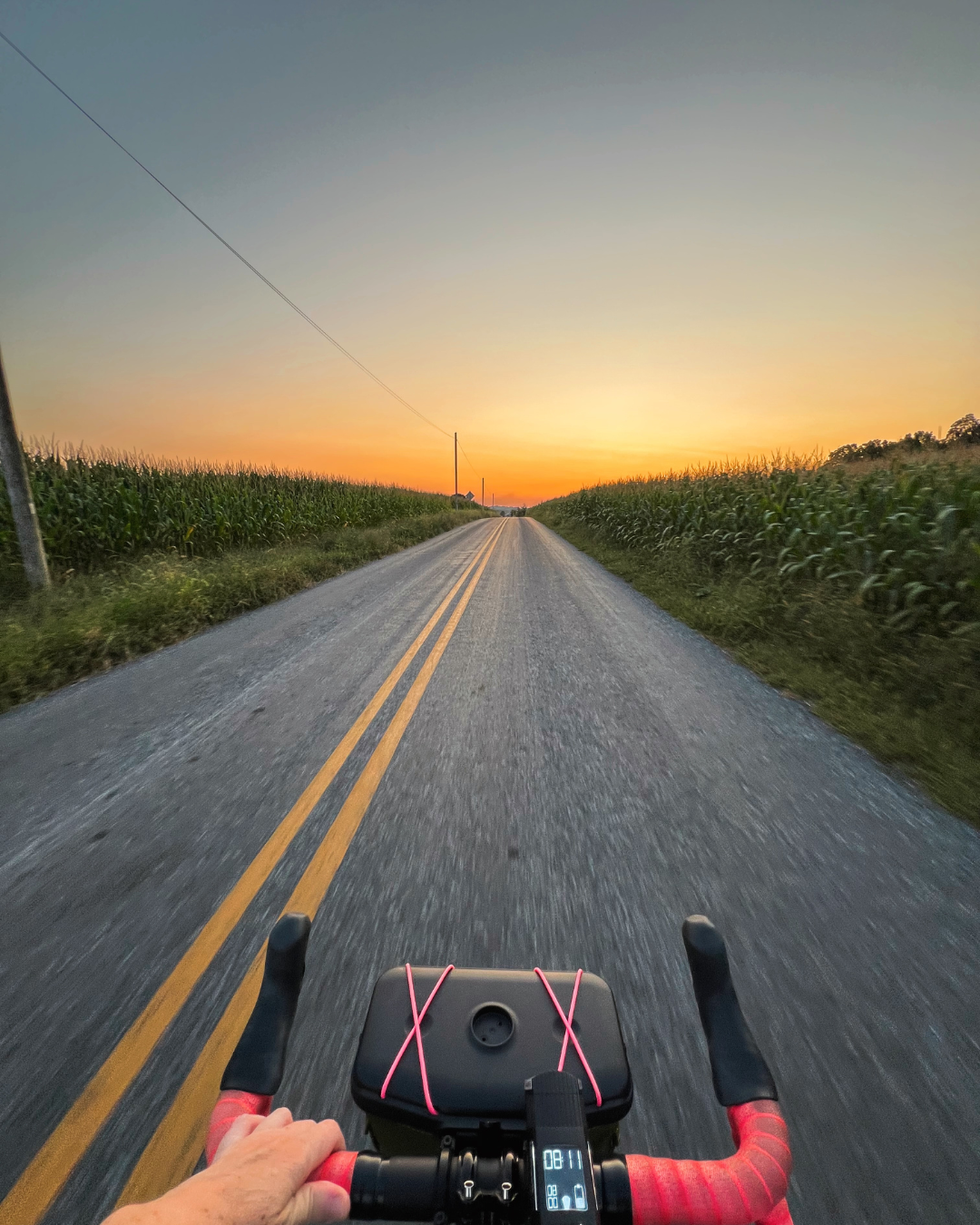If you’re new to cycling or thinking about trying a new type of cycling, you’re probably hearing a lot of cycling buzzwords. But really, what’s the difference between road, gravel, and mountain biking? While all three involve two wheels, they each offer a unique experience in terms of terrain, bike setup, and riding style.
Here’s a breakdown to help you understand the core differences and choose the right path for your next ride.
Road Biking: Speed and Smooth Surfaces
Road cycling is typically geared to those looking for fitness, speed and long-distance riding on pavement. The main type of terrain is paved roads, bike lanes, or rail trails. A road bike is lightweight, often with skinny tires and drop handlebars.
Cycling on the road is all about efficiency, speed, and covering long distances with minimal rolling resistance. Road bikes are designed to be lightweight and aerodynamic to help riders reach higher speeds.
Key Features:
- Skinny tires (23–32mm wide) for low rolling resistance
- Drop handlebars for multiple hand positions
- Geared for flat and hilly pavement
- Generally stiffer frames for power transfer
Pros:
- Great cardio workout
- Fastest type of cycling on hard surfaces
- Ideal for group rides and events like centuries or charity rides
Cons:
- Limited to paved roads
- Less forgiving on rough terrain
- Can be intimidating in traffic-heavy areas
Gravel Biking: Versatility Meets Adventure
Gravel cycling is usually defined by mixed terrain and light off-road riding combined with exploration. When gravel cycling in PA, you’ll be riding state forest trails, fire roads, and crushed gravel paths as the primary route. The typical gravel bike has wider tires and a relaxed geometry. This allows for more comfort as you do longer days in the saddle.
Gravel biking combines the best parts of road and mountain biking. Gravel bikes are built for exploration and capable of handling backcountry gravel roads, all while being efficient enough for pavement.
Key Features:
- Wider tires (35–50mm) with semi-knobby tread
- Drop bars and endurance-friendly geometry
- Disc brakes for reliable stopping on variable terrain and weather conditions
- Mounts for bikepacking bags, water bottles, and racks
Pros:
- Extremely versatile
- Ideal for long rides and bikepacking
- More comfortable than a road bike on rough surfaces
Cons:
- Not as fast on pavement as a road bike (party pace!)
- Not as capable on technical terrain as a mountain bike
Mountain Biking: Off-Road Fun
Mountain biking is defined by a variety of trails, technical obstacles, and fun in the woods. There are different types of mountain biking trails depending on your preferred style, too. You’ll find everything from smooth, flowy singletrack to chunky downhills to bike park jumps.
Mountain bikes are different from gravel or road bikes. They usually have some type of suspension, wide tires to accommodate different terrain, and flat handlebars for better balance. Understanding the difference between full suspension and hardtail mountain bikes is key to finding your mountain biking style.
Key Features:
- Wide, knobby tires (2.2–2.6”) for traction and stability
- Suspension (front or full) for shock absorption
- Flat handlebars for control and responsiveness
- Lower gearing for climbing steep trails
Pros:
- Great for building bike handling skills
- Adrenaline-fueled fun
- Tons of trail variety—from flowy to technical
Cons:
- Slower and heavier on pavement
- Higher maintenance (suspension, tubeless tires, etc.)
- Trail access may require travel
Which type of cycling is for you?
Whether you’re looking for the meditative rhythm of road riding, the adventurous spirit of gravel, or the thrilling challenge of mountain biking, there’s no wrong choice. If you’re anything like me, you’ll want to find a mix between all three. You can use a gravel bike for shorter road rides or a mountain bike on harder gravel trails. Renting a bike or joining a local demo event is a great way to try each style before committing.
